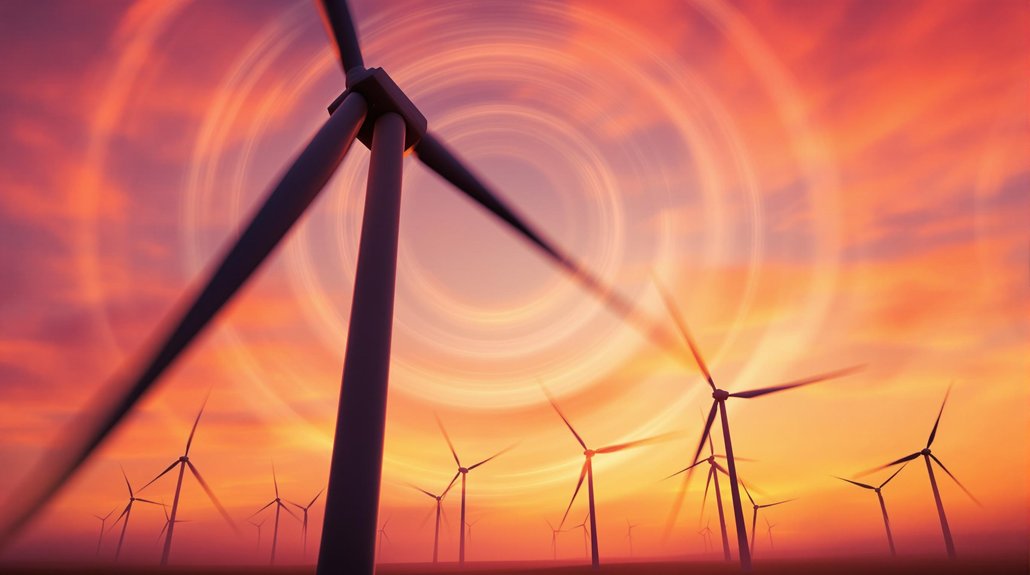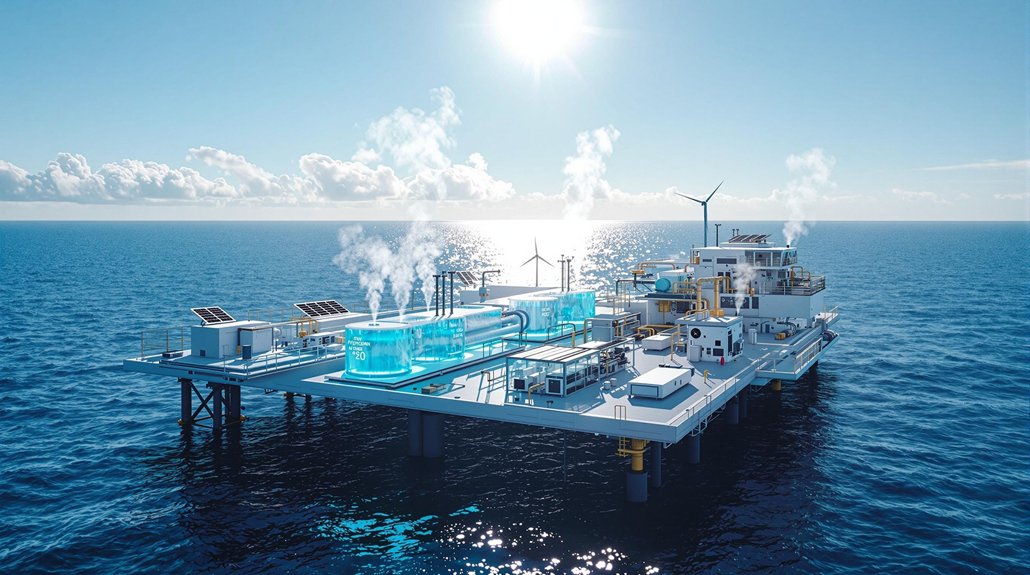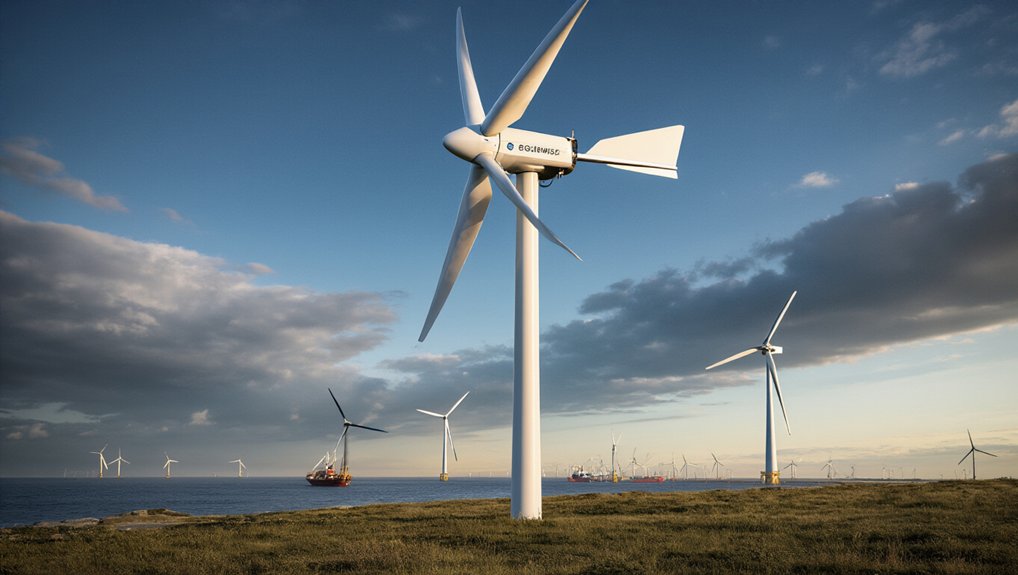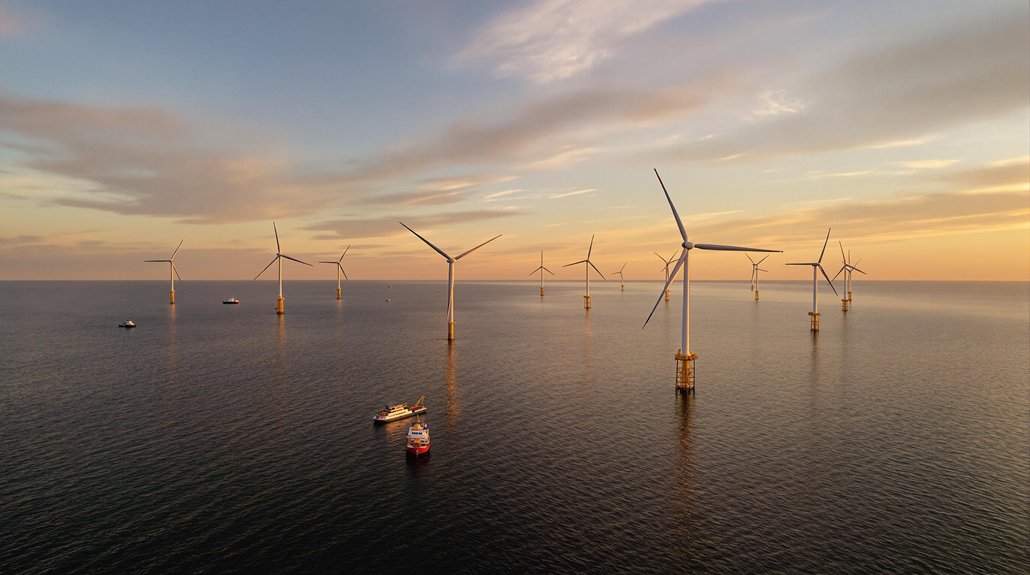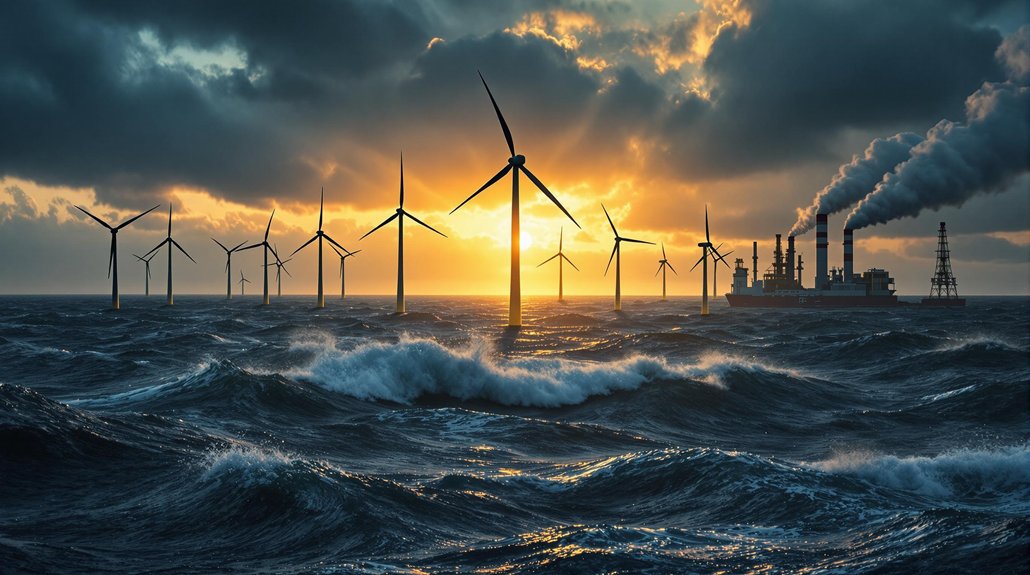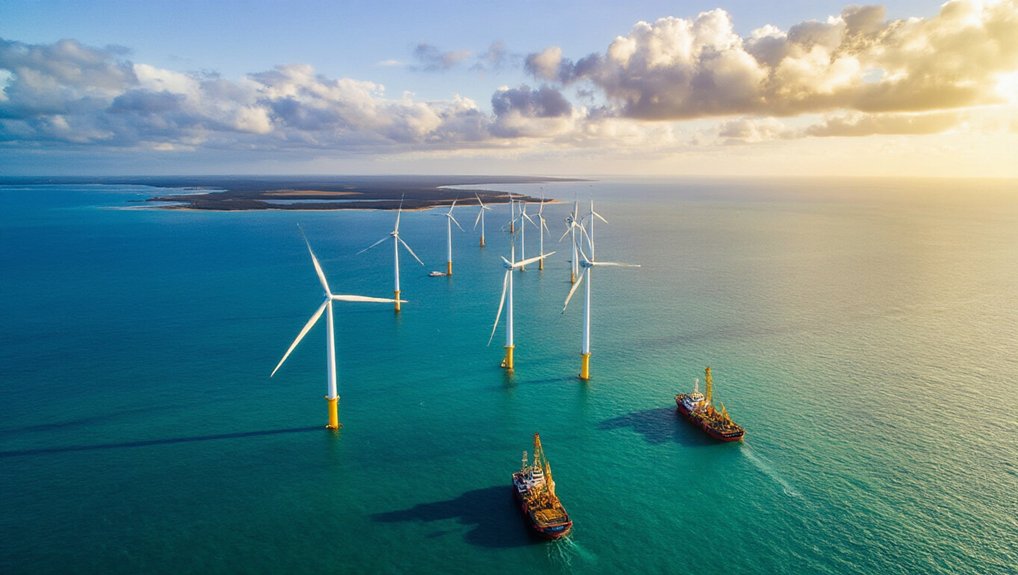Wind turbines dot our landscape, but few people notice which way they spin. Most modern turbines rotate clockwise, and this isn’t just a random choice. The direction affects how efficiently they capture energy and impacts nearby turbines in wind farms. Scientists have discovered that rotation direction creates specific wake patterns that can reduce power output by up to 40% in downwind turbines. This seemingly small detail has major implications for renewable energy production worldwide.
Wind turbines spin through the air, capturing energy with their massive blades, but the direction of this rotation matters more than many realize. Most modern wind turbines rotate clockwise when viewed from upstream. This seemingly simple choice has significant impacts on energy efficiency and environmental effects. This technology harnesses an inexhaustible energy source that will never deplete, unlike finite fossil fuels.
The rotation direction creates a wake behind each turbine. Curiously, this wake rotates in the opposite direction of the blades themselves. When turbines rotate clockwise, their wakes spin counterclockwise, creating specific flow patterns that affect nearby turbines.
These wake characteristics change dramatically based on rotation direction. Counterclockwise spinning turbines produce different near wake patterns, which can either increase or decrease the power output of downwind turbines. Engineers carefully consider these effects when designing wind farms.
The Earth’s hemispheres add another layer of complexity. Northern and Southern hemispheric winds interact differently with turbine rotation. Wind patterns known as veering or backing regimes combine with rotation direction to either enhance or reduce efficiency.
Wind itself isn’t uniform. It changes speed at different heights – a phenomenon called wind shear. The turbine’s rotation direction interacts with these varied wind speeds, affecting how efficiently it captures energy. In some cases, changing rotation direction can improve performance. This interaction is especially significant during nocturnal stable stratification, when vertical wind shear and directional wind veer are more pronounced.
The science behind this involves airfoils – the wing-like shape of turbine blades. These airfoils generate lift forces that drive rotation. The angle at which wind hits these airfoils changes with rotation direction, altering the turbine’s efficiency.
Beyond energy production, rotation direction impacts local environments. Turbine wakes can change nearby temperatures and humidity levels. Proper alignment of turbines with appropriate rotation can minimize these effects.
While most people don’t notice which way turbines spin, engineers and scientists continue studying ideal rotation directions. Their goal is to maximize energy production while minimizing environmental impacts. As wind energy grows worldwide, these seemingly minor details make significant differences in our renewable energy future.
